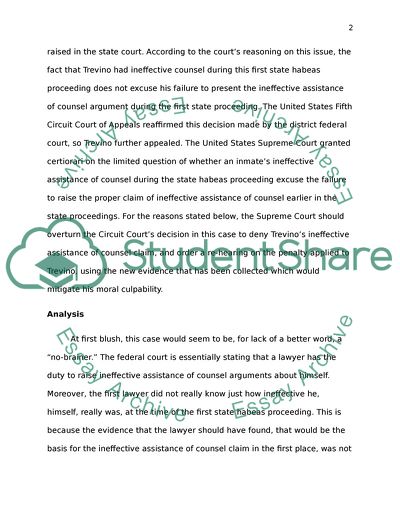Cite this document
(“The United States Supreme Court: Trevino and Assistance of Counsel Essay”, n.d.)
The United States Supreme Court: Trevino and Assistance of Counsel Essay. Retrieved from https://studentshare.org/law/1793812-the-american-constitution
The United States Supreme Court: Trevino and Assistance of Counsel Essay. Retrieved from https://studentshare.org/law/1793812-the-american-constitution
(The United States Supreme Court: Trevino and Assistance of Counsel Essay)
The United States Supreme Court: Trevino and Assistance of Counsel Essay. https://studentshare.org/law/1793812-the-american-constitution.
The United States Supreme Court: Trevino and Assistance of Counsel Essay. https://studentshare.org/law/1793812-the-american-constitution.
“The United States Supreme Court: Trevino and Assistance of Counsel Essay”, n.d. https://studentshare.org/law/1793812-the-american-constitution.


